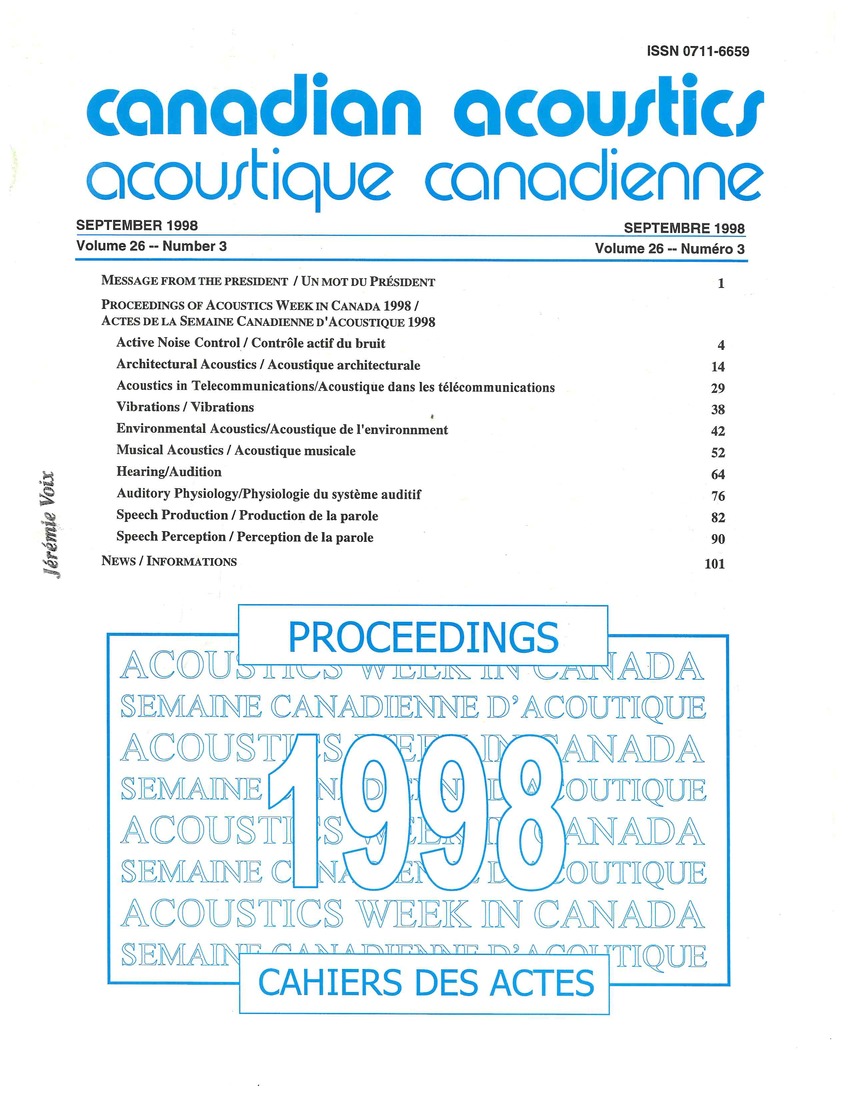Influence of a secondary task on the understanding of continuous discourse by younger and older adults
Keywords:
Acoustic intensity, Audition, Cognitive processingAbstract
Schneider, Daneman, Murphy, and Kwong See (1998) showed that when sound levels were adjusted to compensate for individual differences in hearing, the ability of both younger and older adults to answer questions based on connected discourse was nearly equivalent at all levels of noise. In the absence of such adjustments, older adults answered fewer questions correctly than younger adults. These two results suggest that poorer hearing, rather than a decline in cognitive processing, is the reason why older adults are less able to recall information from connected discourse. However, in the previous study, the participants were able to focus their attention on the connected discourse. In everyday listening situations, we often have to divide our attention between two different tasks. Thus, it is possible that age-related difference in performance would emerge in a divided attention situation even after stimulus levels had been adjusted for individual differences in hearing. In two experiments we tested younger and older adults' ability to extract and remember information from connected discourse in the presence of a distracting secondary task.Additional Files
Published
How to Cite
Issue
Section
License
Author Licensing Addendum
This Licensing Addendum ("Addendum") is entered into between the undersigned Author(s) and Canadian Acoustics journal published by the Canadian Acoustical Association (hereinafter referred to as the "Publisher"). The Author(s) and the Publisher agree as follows:
-
Retained Rights: The Author(s) retain(s) the following rights:
- The right to reproduce, distribute, and publicly display the Work on the Author's personal website or the website of the Author's institution.
- The right to use the Work in the Author's teaching activities and presentations.
- The right to include the Work in a compilation for the Author's personal use, not for sale.
-
Grant of License: The Author(s) grant(s) to the Publisher a worldwide exclusive license to publish, reproduce, distribute, and display the Work in Canadian Acoustics and any other formats and media deemed appropriate by the Publisher.
-
Attribution: The Publisher agrees to include proper attribution to the Author(s) in all publications and reproductions of the Work.
-
No Conflict: This Addendum is intended to be in harmony with, and not in conflict with, the terms and conditions of the original agreement entered into between the Author(s) and the Publisher.
-
Copyright Clause: Copyright on articles is held by the Author(s). The corresponding Author has the right to grant on behalf of all Authors and does grant on behalf of all Authors, a worldwide exclusive license to the Publisher and its licensees in perpetuity, in all forms, formats, and media (whether known now or created in the future), including but not limited to the rights to publish, reproduce, distribute, display, store, translate, create adaptations, reprints, include within collections, and create summaries, extracts, and/or abstracts of the Contribution.


